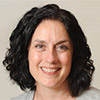Earlier this week, an influential group of experts in preventive care affirmed that children age 6 and older should be screened for obesity and referred to intensive treatment when necessary.
While the Affordable Care Act requires that nearly all plans cover such treatment, most kids don’t have access to programs featuring exercise, nutrition and counseling, according to an editorial published in JAMA Internal Medicine.
After rising for three decades, obesity rates for children and adolescents have leveled off in recent years. Still, nearly a third of kids are overweight, and 17 percent meet the standard for obesity, meaning that for their age and sex they have a body mass index (weight measured in kilograms divided by height measured in meters squared) that is in the 95th percentile or higher.
The U.S. Preventive Services Task Force, a nonpartisan group of medical experts that issues recommendations on preventive care, evaluated the evidence related to screening and treating children and adolescents for obesity. Based on that analysis, this week the group affirmed its 2010 recommendation.
 Insuring Your Health
Insuring Your HealthUnder the ACA, preventive care recommended by the task force must be covered by nearly all health plans without making consumers pay for it out-of-pocket. But despite the task force’s recommendation, insurance coverage is spotty, said Dr. Jason Block, associate director of the Division of Chronic Disease Research Across the Lifecourse at Harvard Medical School, who co-authored an editorial about the new guidelines.
Even when plans cover obesity treatment, they may not pay for a range of services.
“It’s a problem for obesity treatment programs across the board,” Block said. “They may cover the physician role in treatment but they may not cover the role of the exercise physiologist or the nutritionist.”
In addition, many obesity treatment centers are located in urban areas, far from where many children who need their services live. And many obesity programs don’t offer the minimum 26 hours of personal contact that the task force determined is necessary for effective treatment, Block said. (Programs that incorporated 52 contact hours were even more effective, the task force found.)
“We need to be more creative about accommodating strategies like telehealth and other technologies that can facilitate [access],” he said. “A health coach could engage by phone or email and help to facilitate some of that contact.”
Please visit kffhealthnews.org/columnists to send comments or ideas for future topics for the Insuring Your Health column.







